The Sheik (film)
8.6 /10 1 Votes
100% Rotten Tomatoes Genre Adventure, Drama, Romance Country United States | 7.3/10 IMDb Duration | |||||||||||||||||||||||||||||||||
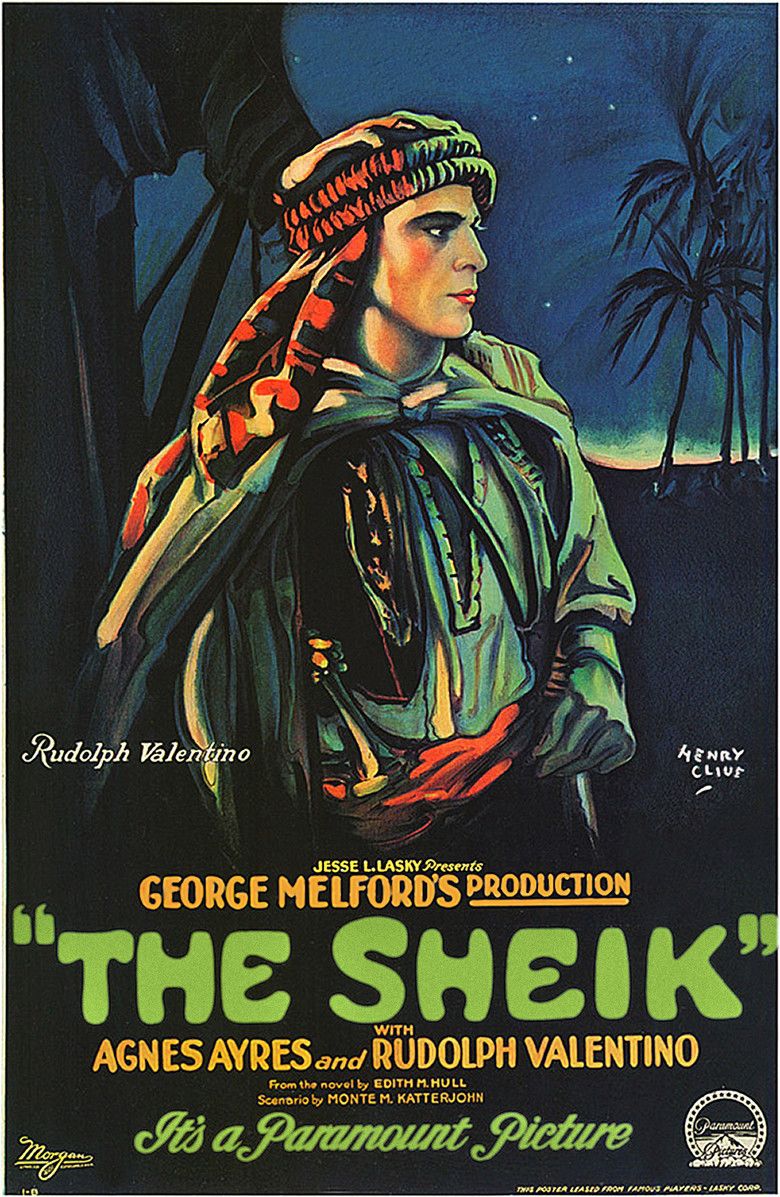 | ||||||||||||||||||||||||||||||||||
Language SilentEnglish intertitles Release date October 20, 1921 (1921-10-20) Cast Similar movies Related George Melford movies Tagline A photoplay of tempestuous love between a madcap English beauty and a bronzed Arab chief! | ||||||||||||||||||||||||||||||||||
The sheik 1921 with rudolph valentino
The Sheik is a 1921 American silent romantic drama film produced by Famous Players-Lasky, directed by George Melford, starring Rudolph Valentino and Agnes Ayres, and featuring Adolphe Menjou. It was based on the bestselling romance novel of the same name by Edith Maude Hull and was adapted for the screen by Monte M. Katterjohn. The film was a box-office hit and helped propel Valentino to stardom.
Contents
- The sheik 1921 with rudolph valentino
- The sheik retold by victoria vane e m hull
- Plot
- Cast
- Production
- Reception
- Proposed remake
- Home media
- In popular culture
- References
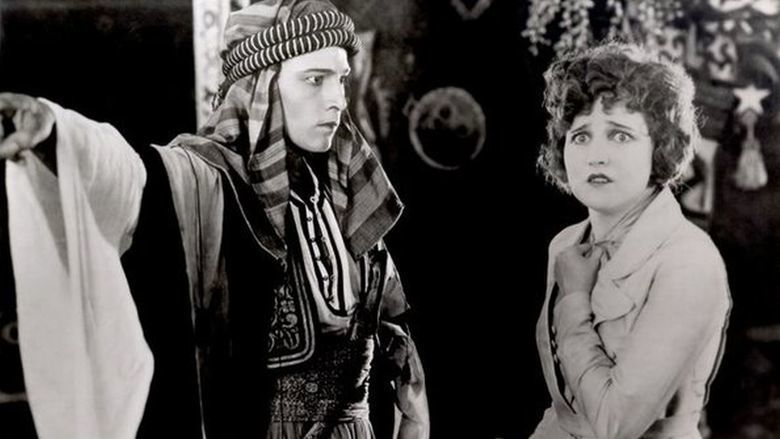
In the sequel The Son of the Sheik, Valentino played both the Sheik and his son, while Ayres reprised her role.
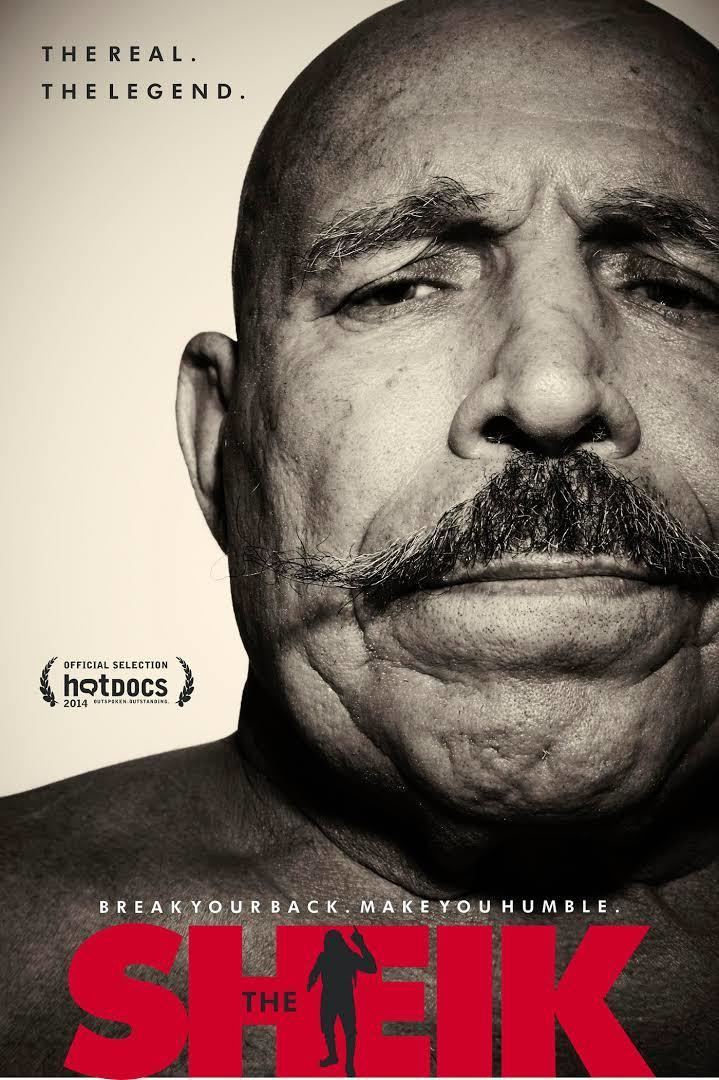
The sheik retold by victoria vane e m hull
Plot
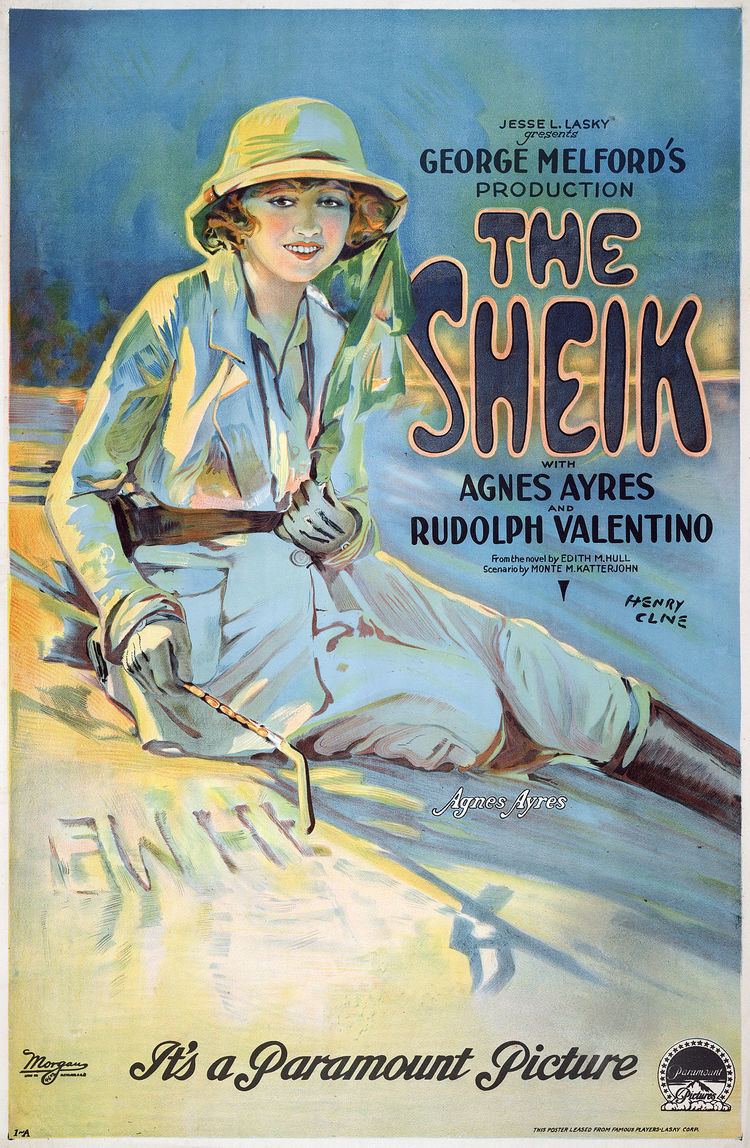
In the North African town of Biskra, headstrong Lady Diana Mayo (Agnes Ayres) refuses a marriage proposal because she believes it would be the end of her independence. Against her brother's wishes, she is planning a month-long trip into the desert, escorted only by natives.
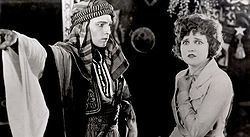
When Diana goes to the local casino, she is informed it has been appropriated for the evening by an important sheik, and that none but Arabs may enter. Annoyed at being told what she cannot do, and her curiosity piqued, Diana borrows an Arab dancer's costume and sneaks in. Inside, she finds men gambling for new wives. When she is selected to be the next prize, she resists. Sheik Ahmed Ben Hassan (Rudolph Valentino) intervenes, then realizes she is white. Amused, he sends her away. Afterward, Mustapha Ali (Charles Brinley) informs the Sheik she is the woman he has been hired to guide tomorrow. The Sheik hatches a plan. Early the next morning, he sneaks into her room and tampers with the bullets in her revolver as she is sleeping.
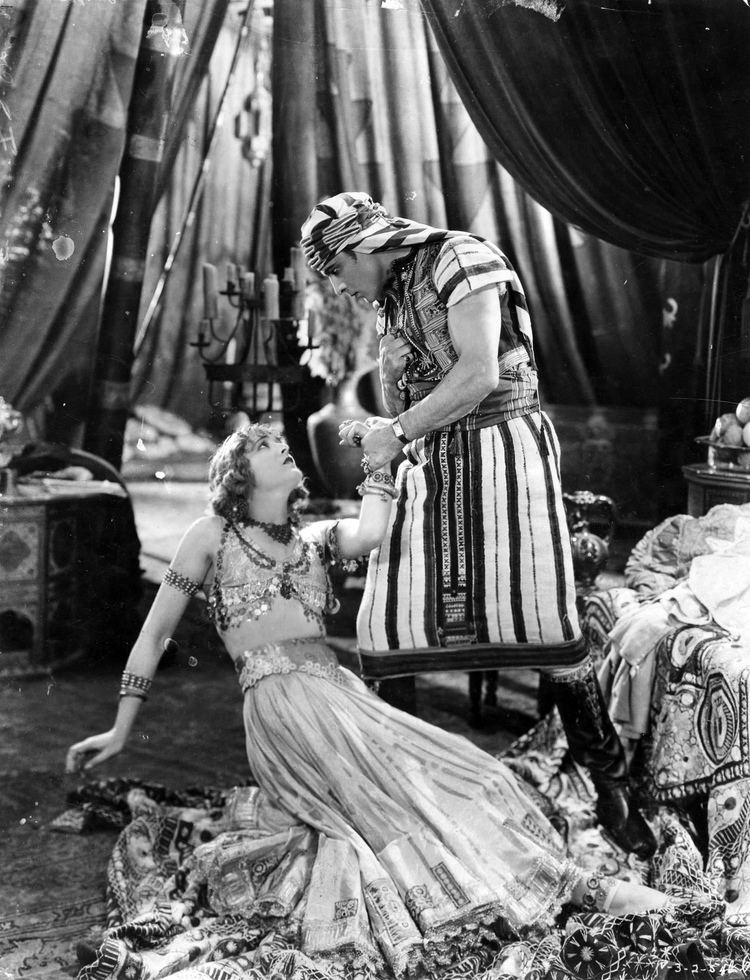
As her brother leaves her to her desert excursion, she assures him he will see her in London next month. The Sheik and his men come upon Diana riding alone. She tries to flee while shooting at the Sheik, but he easily captures her. Back at his encampment, he orders her about. She is unused to such treatment, but the Sheik tells her she will learn and demands she dress like a woman (she is wearing pants) for dinner.

Diana tries again to escape, this time into a raging sand storm. The Sheik saves her from certain death, and tells her she will learn to love him. Later, he finds Diana alone in her quarters weeping. The Sheik considers forcing himself upon her, but decides against it and calls for a serving girl, Zilah (Ruth Miller). Zilah offers her a hug. Diana accepts, and pours out her tears in Zilah's arms.
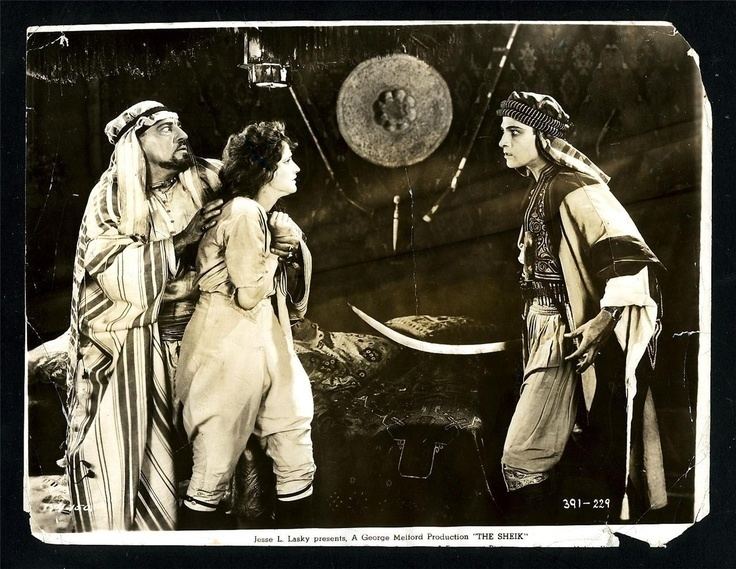
After a week, the Sheik is delighted by the news that his close friend from his days in Paris, where he was educated, is coming for a visit. Diana is dismayed at the thought of being seen in Arab dress by a Westerner, but the Sheik does not understand her shame. He does, however, return her gowns before his friend comes so she can wear them to dinner. When she is introduced to writer and doctor Raoul St. Hubert (Adolphe Menjou), Diana's spirit is nearly broken. He befriends her and reprimands the Sheik for his callous treatment of her. The Sheik returns her Western clothing, though he refuses to release her.
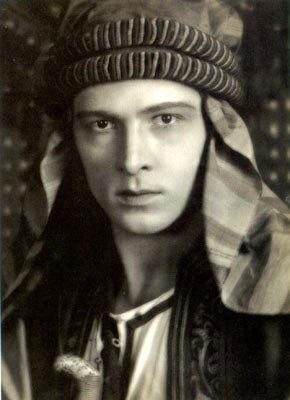
When Raoul is called away to tend to an injured man, Diana shows concern that it might be the Sheik. Seeing this from hiding, the Sheik is elated that she may be warming up to him at last. He gives Diana her gun back, telling her he trusts her.
Diana is allowed to go into the desert under the watchful eye of the Sheik's French valet Gaston (Lucien Littlefield). She escapes. Making her way across the sands, she spots a caravan, unaware that it belongs to the bandit Omair (Walter Long). Fortunately, the Sheik and his men reach her first.
The Sheik reveals to Raoul he is in love with Diana; his friend convinces him to let her go. Meanwhile, Diana is allowed out once more. She playfully writes "I love you Ahmed" in the sand. Then Omair's band captures her, killing her guards and leaving the wounded Gaston for dead.
When the Sheik goes looking for Diana, he sees her message, then learns from Gaston who has abducted her. He gathers his men to attack Omair's stronghold. Omair tries to force himself on Diana, but is almost stabbed by one of his women. Then the Sheik and his men sweep in. After a long fight, the Sheik kills Omair, but is himself gravely injured.
Raoul tends to him and tells Diana he has a chance. She sits and holds the Sheik's hand. When she remarks that his hand is big for an Arab, Raoul reveals that the Sheik is not one. His father was British and his mother Spanish. They died in the desert, and their child was rescued and raised by the old Sheik; when the old man died, Ahmed returned to rule the tribe. When Ahmed wakes up, Diana confesses her love.
Cast
Production
The film was based on Edith Maude Hull's best selling novel The Sheik. The novel became a best seller partly because of its controversial dealings with racial miscegenation and rape. Due to the controversial subject matter, certain aspects of the novel were left out of the film. In the novel, Sheik Ahmed rapes Lady Diana but in the film, rape is only suggested as a curtain closes on Sheik Ahmed and Lady Diana before there is any physical contact between the two. George Melford said, "We have handled the frank scenes in 'The Sheik' so delicately that I think the censors will be the only disappointed reviewers."
There appears to be some dispute as to where the film was shot. Emily W. Leider, author of Dark Lover: The Life and Death of Rudolph Valentino, argues that the desert exterior scenes were filmed in Oxnard, California, and the Guadalupe Dunes of Santa Barbara County. However, one 1983 newspaper article featured in the Suffolk County News contends that exteriors scenes were shot at the "Walking Dunes" in Montauk, New York and at the Kaufman Astoria Studios. Author Richard Koszarski claims that this is incorrect and cites it as an "urban legend". Another source says filming was done in the desert near Palm Springs, California.
James Kirkwood, Sr. was George Melford's original choice for the starring role of Sheik Ahmed Ben Hassan.
Reception
The Sheik premiered in Los Angeles on October 21, 1921. Critical reception was mixed as some critics felt that it was mistake to leave out the rape of Lady Diana by Sheik Ahmed as it altered the original message of the novel. Some critics felt that the "toned-down" film version would not be well received; however, the film was a major success with audiences, and set new attendance records where it premiered. In its first week of release, it set attendance records at two of New York's major theatres, the Rialto and the Rivoli. The New York Telegraph estimated that in the first few weeks 125,000 people had seen the film.
Due to the film's success, Jesse Lasky declared the last week of November 1921 as "The Sheik Week", and screened the film at 250 theatres in the United States on November 20, 1921. The film ran for six months in Sydney, Australia, as well as 42 weeks in one theatre in France. It was the first Valentino film to show in his native Italy.
Within the first year of its release, The Sheik exceeded $1 million in ticket sales (the film was made for under $200,000). The Sheik helped to solidify Valentino's image as one of the first male sex symbols of the screen and made him an international star. While he was a popular draw with female audiences, some male audiences mocked his onscreen persona and questioned his masculinity. Valentino would later attempt to portray roles that went against his "Sheik" image with limited success. His final film was the sequel The Son of the Sheik, which premiered nationwide after his death in August 1926.
A reviewer for Photoplay described it as "Popular entertainment—that and nothing more. But that is enough."
Proposed remake
Film rights were bought by Edward Small who recreated segments of The Sheik in the biographical picture Valentino (1951), starring Anthony Dexter, who Small announced would star in a remake of The Sheik, but which was never made.
Home media
The Sheik has been released on Region 1 DVD by several companies over the years including Image Entertainment in 2002. In 2004, Instant Vision released the film on Region 2 DVD.
In popular culture
References
The Sheik (film) WikipediaThe Sheik (film) IMDbThe Sheik (film) Rotten TomatoesThe Sheik (film) themoviedb.org
